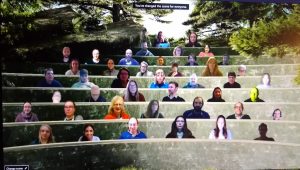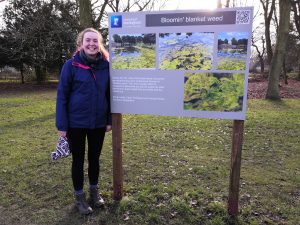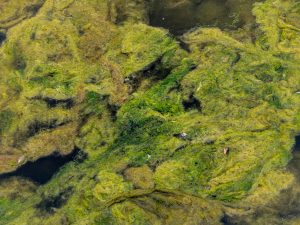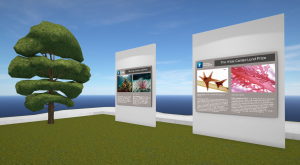
February 3, 2021, by lzzeb
The Hidden World of Algae
A blog by Hannah Kemp, PhD student
At the beginning of January, the University of Nottingham ‘virtually’ welcomed algae researchers and enthusiasts from across the world, to the 69th British Phycological Society (BPS) 2021 Winter Meeting, held in partnership with Protistology UK. The online format was a big success with 259 delegates tuning in from 30 different nations and 6 continents! Some highlights from the week included: a public lecture about polar microbiomes from Anne Jungblut, talks by early career researchers covering such a diverse and interesting range of topics, and the conference social – algae bingo! I really enjoyed being part of the organising committee and we are all thankful that despite restrictions we delivered a conference experience where everyone could come together and enjoy sharing research.
When we started planning the conference, pre-pandemic, the suggestion was made to use the exhibition space around Highfields Lake for an outreach project. Little did we know 2020 was going to be the year of local daily walks, and an outdoor photographic exhibition about algae couldn’t have been more perfect! The Hidden World of Algae exhibition has been put together with the aim of showcasing the beauty and global importance of algae, the practical applications of microscopic photography, and algae-based research at the University of Nottingham. The exhibition showcases photographs from the Hilda Canter-Lund photographic competition run by the British Phycological Society, which is open to anyone from microscopy hobbyists to professional scientists. These images are combined with pictures taken by students from the University’s MSc in Biological Photography and Imaging, to make the largest outdoor exhibition of algae and seaweeds in the world.
As I took on the role of project lead, I was keen to include some of my own algae research. I am a 2nd year PhD student researching blanket weed blooms in shallow freshwater lakes, in partnership with the National Trust. These nuisance blooms are caused by the excess growth of filamentous macroalgae. Over the summer of 2020, the lake on campus experienced prolific blanket weed blooms which of course I had to sample! The algae were photographed under the microscope by Chris Carter, to be included in the exhibition alongside pictures taken of the blooms themselves by fellow student César Rodríguez.
If you are local to Nottingham the open-air exhibition is located in Highfields Park around the lake next to the University of Nottingham Campus. To maximise the number of people who could experience and enjoy this installation, I created an online virtual exhibition using the platform Artsteps. https://www.artsteps.com/embed/5fe1bfa5a050ec18e2e7077f/1280/720 You can go on a guided tour by clicking the arrows on the screen or move around at your own pace using keyboard arrows in a makeshift outdoor exhibition space, perfect for a working-from-home break!
I would like to end with some acknowledgments to all the wonderful people that made this exhibition happen. Thank you to Stephen Galloway for designing the boards and all involved in the production – Martyn Kelly, Thomas Hartman and Suzanne McGowan. Thank you for the generous support from Lakeside Arts, the Nottingham City Council Parks and Open Spaces team, and James Parkinson with the Highfields Park Rangers for bringing the exhibition to life. The exhibition was made possible by Cascade: Funding transformative student projects thanks to donations from alumni and friends of the University of Nottingham. We would also like to acknowledge the British Phycological Society for funding.
No comments yet, fill out a comment to be the first






Leave a Reply